Stolipinovo, a ghetto neighbourhood near to the center of one of Europe’s oldest and most historical cities, can safely be described as third-world, poverty stricken, rampant with disease, heavily polluted, and somewhat shocking. As many as fifty-thousand predominantly Roma (Gypsy) people are densely packed into concrete communist-era apartment blocks, or within the surrounding tapestry of hobbled-together shacks and shanties. In both cases, many survive without running water.
Much of the district is covered in a putrid sea of trash. Broken sewerage and water pipes leave large pools of fetid water along the main boulevards. Not so long ago, a hepatitis epidemic ran through the area. Unemployment and crime, are off the charts. Many children don’t attend school. Recently listed as the worst place on the planet to take a short vacation, Stolipinovo is a parallel world that defies belief, just a short drive from the heart of Plovdiv, Bulgaria. This is the largest Gypsy ghetto in Europe.
Along with a Nepalese photojournalist, and two local Bulgarian girls roped into providing translation duties, we walked to Stolipinovo from the city centre of Plovdiv, Bulgaria. It’s only about a two or three kilometer journey. Chatting on the way, I discovered that neither of the local girls had ever walked around “the ghetto”, but both seemed somewhat curious. Until now, they had only read and seen tales from Stolipinovo in the local media – dominated by reports of drugs, murder, crime, and poverty. Now, they would see for themselves just what the ghetto down the street was all about.
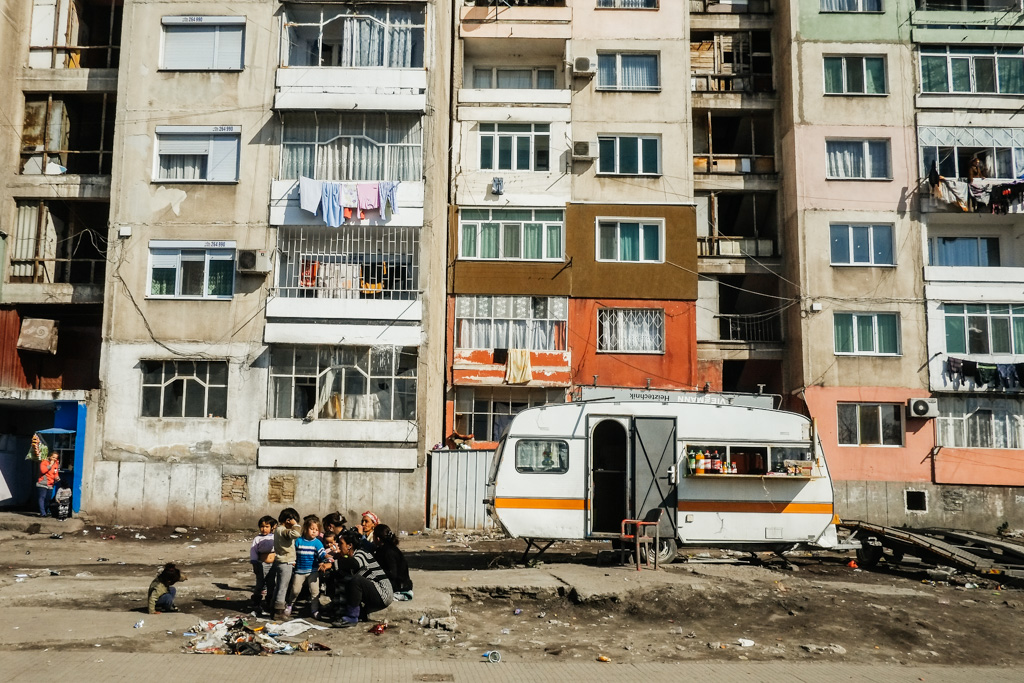
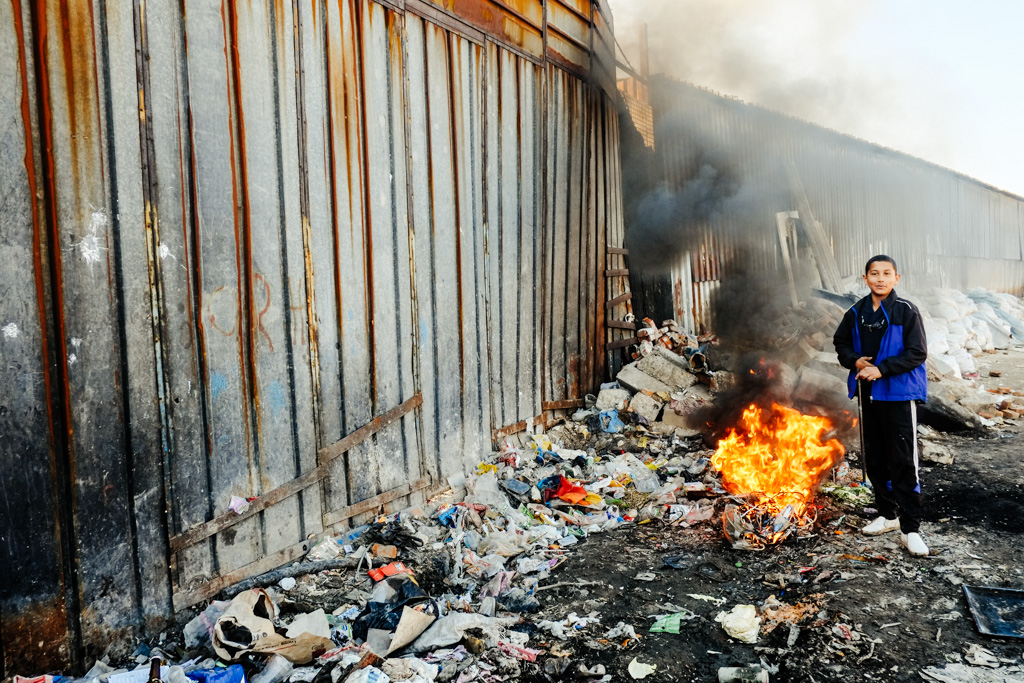
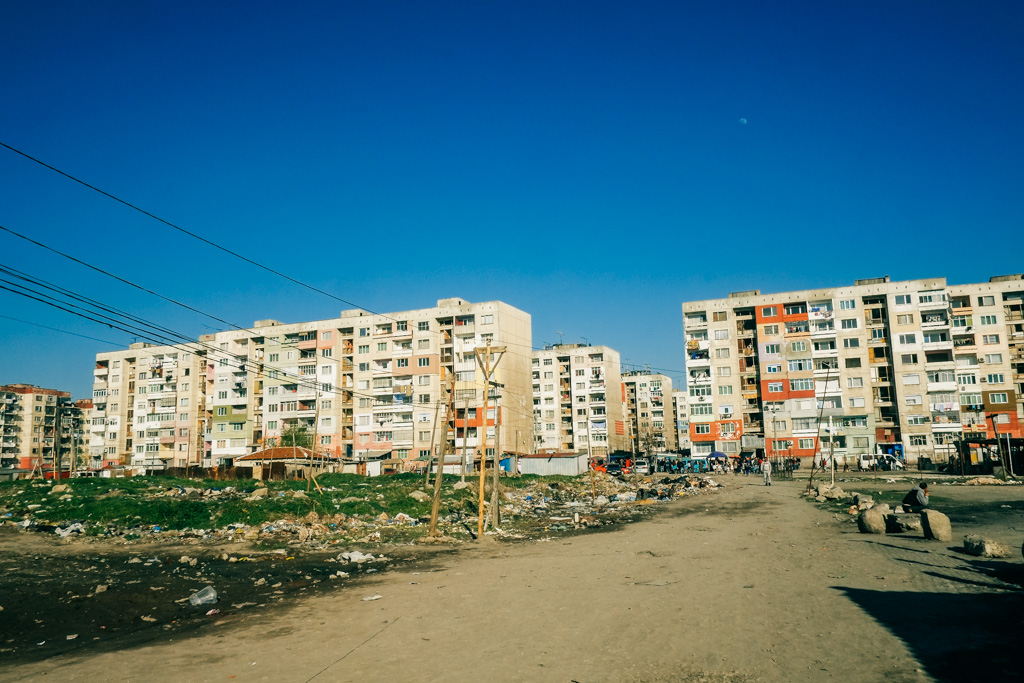
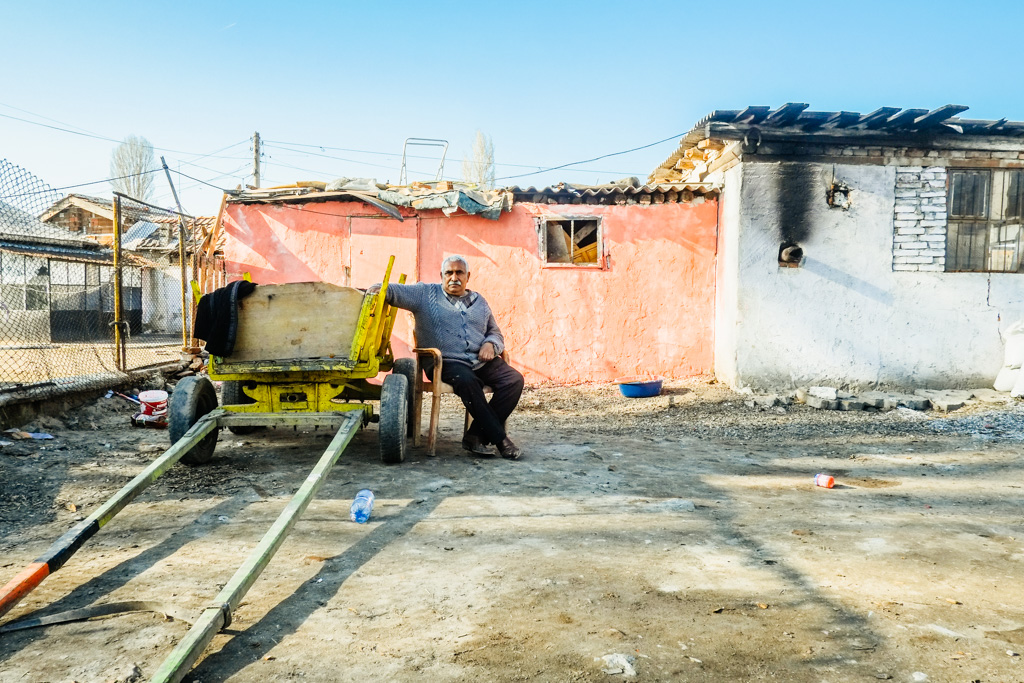
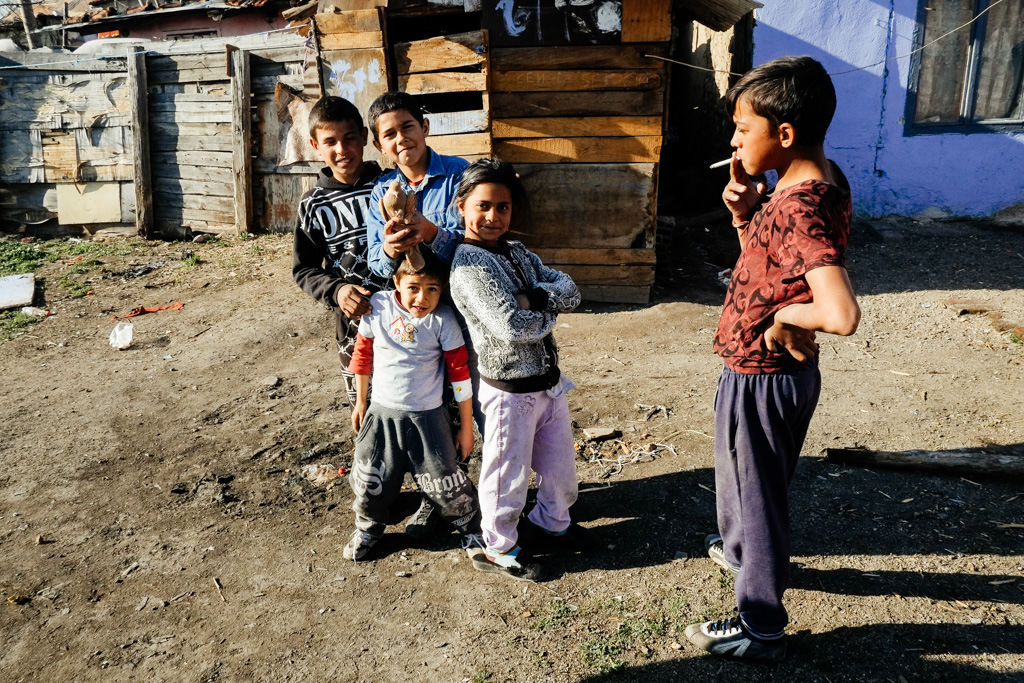
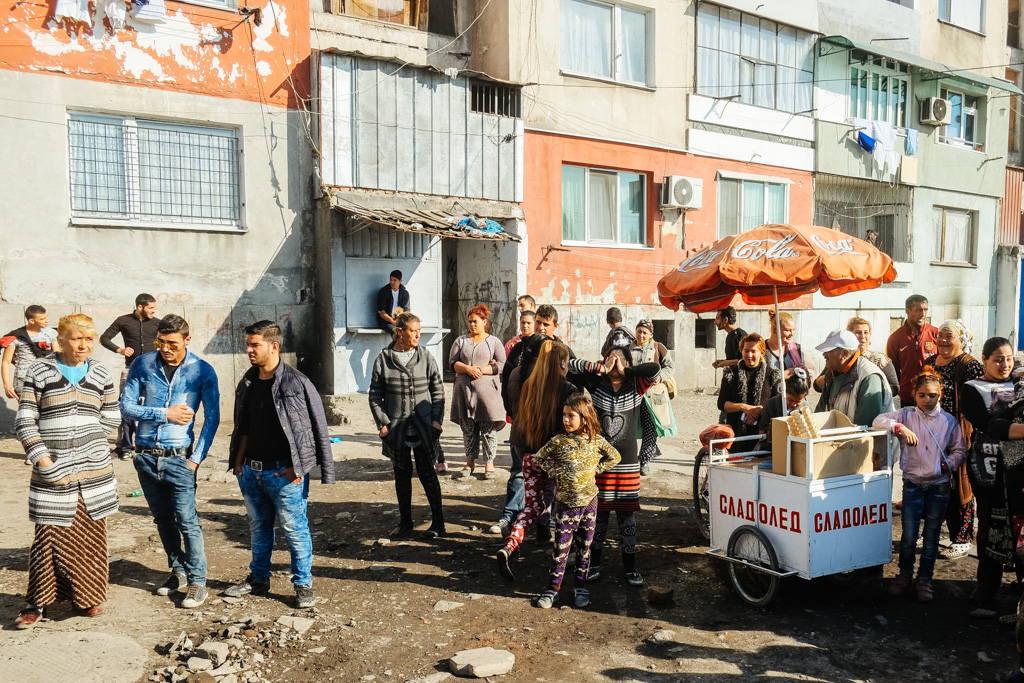
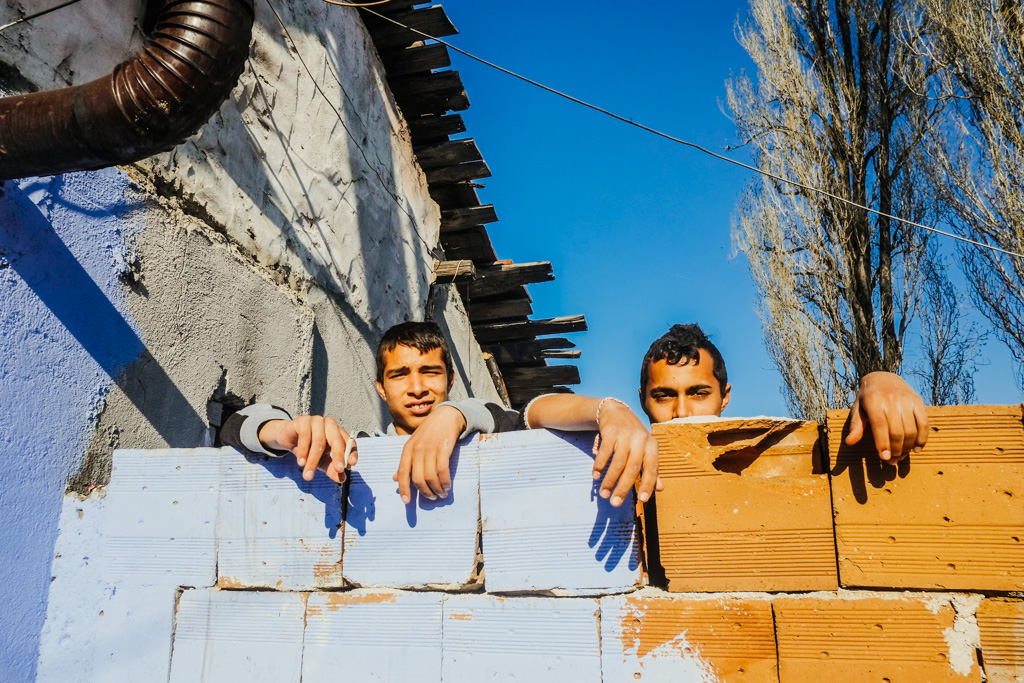
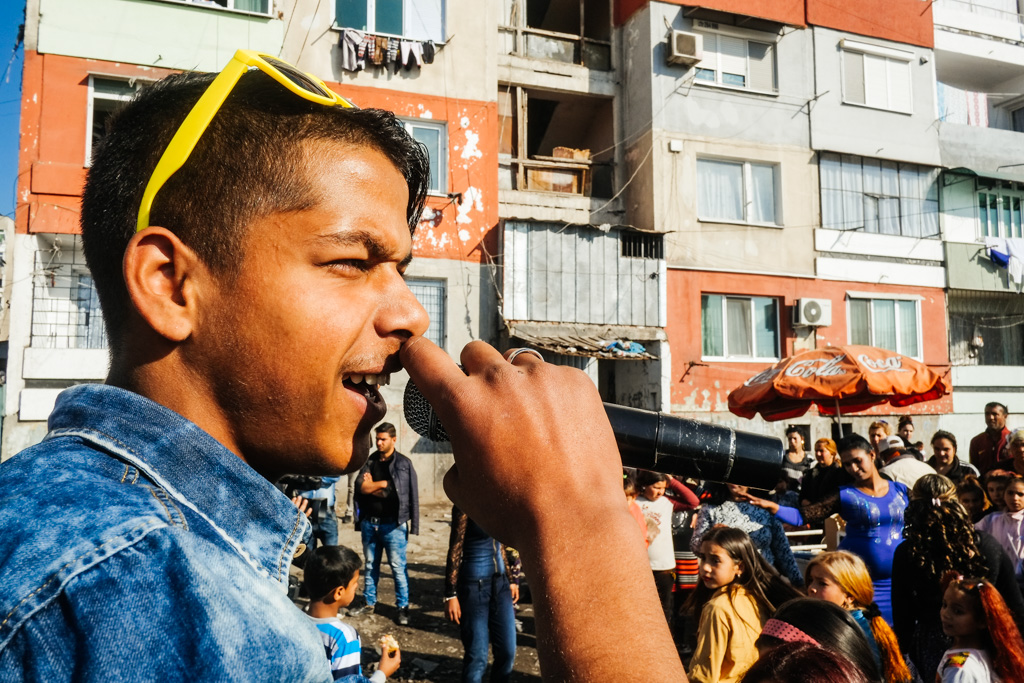
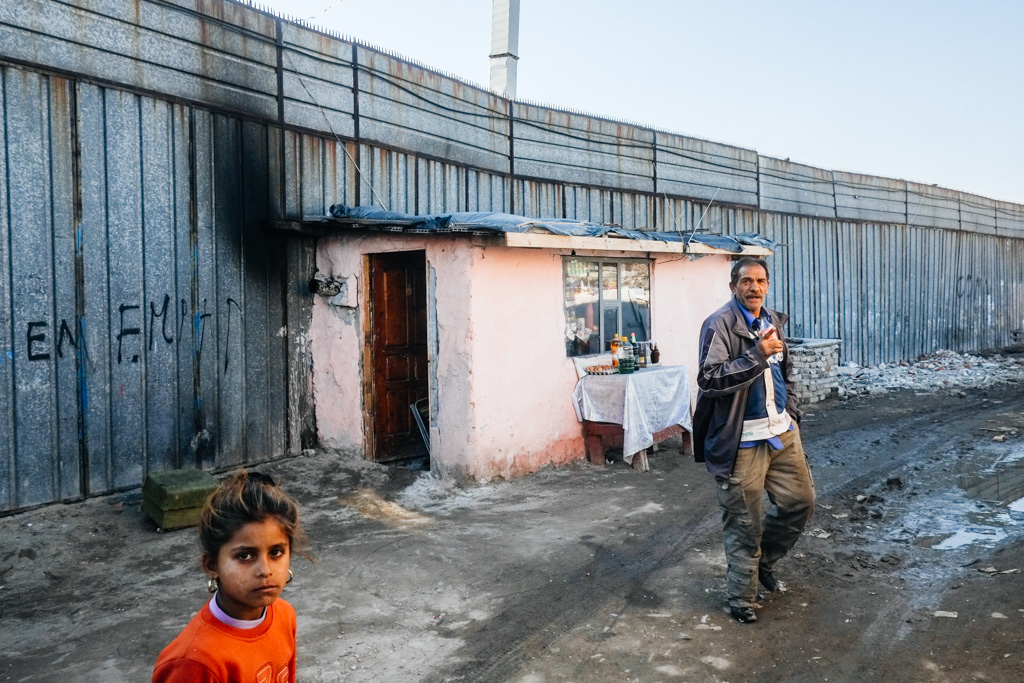
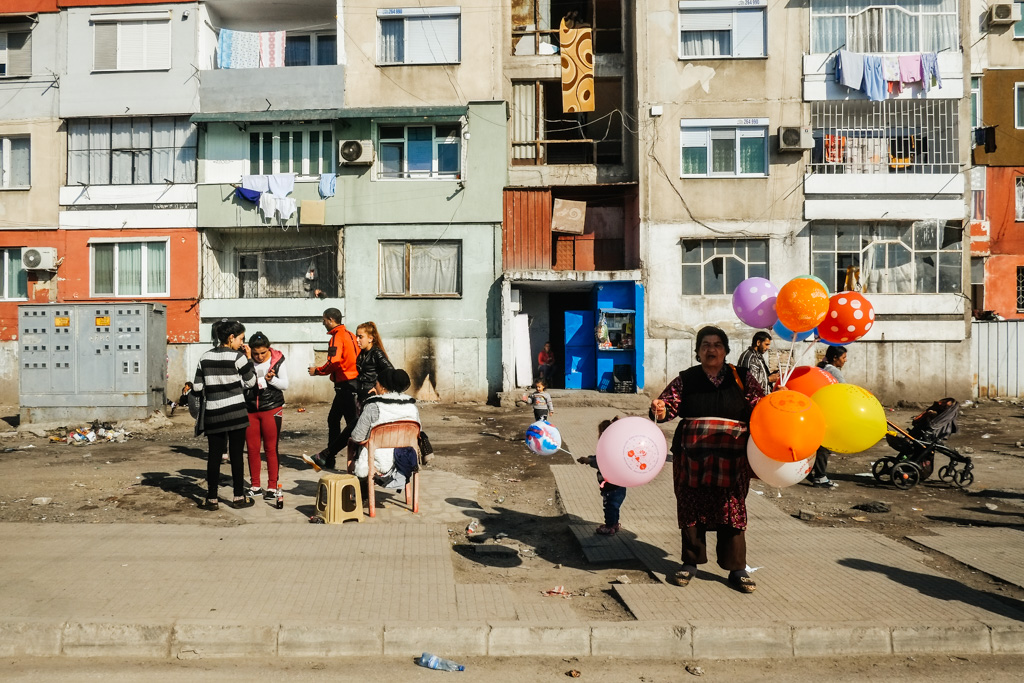
After we arrived in Stolipinovo, the girls didn’t hang around for long. There’s a shocking amount of garbage, and a revolting stench often fills the air. Within a few minutes, we received a friendly warning from a staunch looking group of men – they kindly, but firmly, advised me that Stolipinovo wasn’t the best neighbourhood to be taking photos. Shortly thereafter, a vicious dog fight broke out on a main boulevard. We stood still as the two large dogs ran around us, biting, growling, and crashing through piles of debris. Eventually, the bloodied dogs were somewhat bought under control by an elderly lady brandishing a large wooden pole. I looked at the girls, and half-jokingly said “shit just got real”, they looked back at me and said “Nate, we are ready to leave now.” We walked them out of the largest Gypsy ghetto in Europe, and then I walked back in to take a few more photos.
Unfortunately, the girls missed seeing a heavy-set man shouting aggressively at me, from four levels up in an apartment building. He motioned me to wait, slammed his window, and the window then fell all four floors, crashing to the ground in front of me. In the shadow of several apartment blocks, surrounded by dirt and mud, standing next to around twenty live sheep, for some reason I decided to wait for this man.
Moments later, he came from the front door, running, yelling, and immediately grabbed my camera. We tussled for a little while, I wouldn’t let go, we couldn’t understand each other but the small crowd that was gathering didn’t seem to be too concerned at the actions of this now frothing man. Short version – he didn’t get my camera, and I got away unscathed.
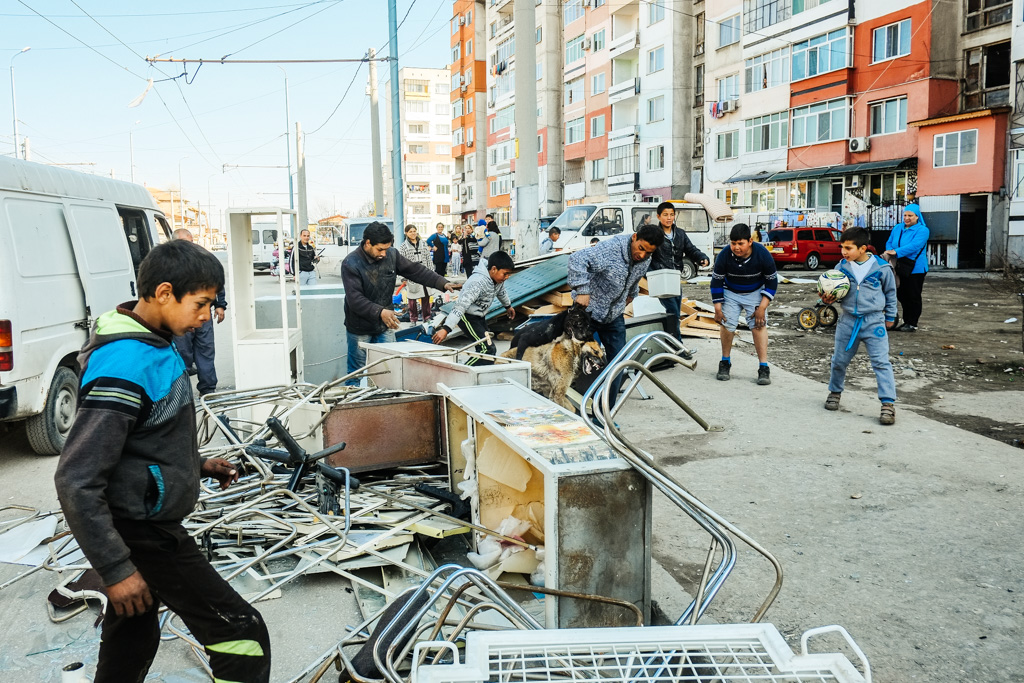
No doubt, with photos and stories like these, many people will see and read this page, and begin to wonder about my intentions, and what makes me “entitled” to show these photos of an area most Europeans would prefer didn’t exist. In Europe, Roma/Gypsies can be a touchy subject. Racism and discrimination abounds. Many people may question the need for a photo-set showing the poverty of a ghetto like Stolipinovo. After all, this site is a “travel” site, and very, very, few people have any interest in travelling to Stolipinovo.
During the course of my travels, I’m not actively seeking out Gypsy ghettos like Stolipinovo. I’ve got to know the surrounding city, Plovdiv, better than most tourists (I’ve now lost count of the number of times I’ve visited here), and I’ve spent many months in the city over the last couple of years. This was my second visit to Stolipinovo, a small, yet distinctive, slice of Europe that not many people will ever get to see. My intentions are simple – I had an opportunity to explore Stolipinovo, with a fellow photographer, and so I did.
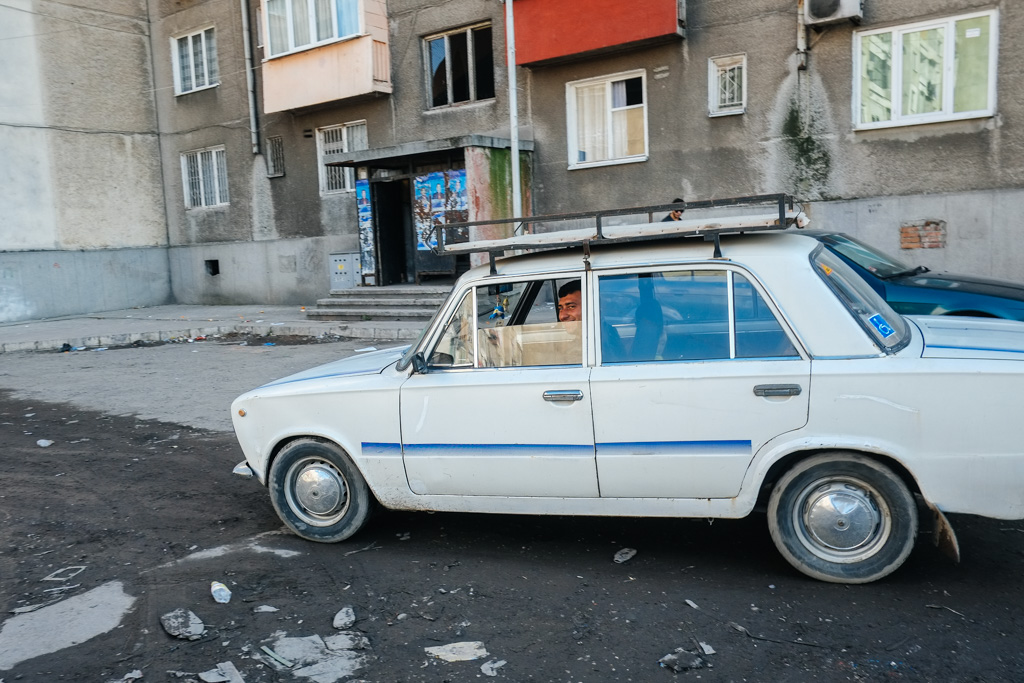
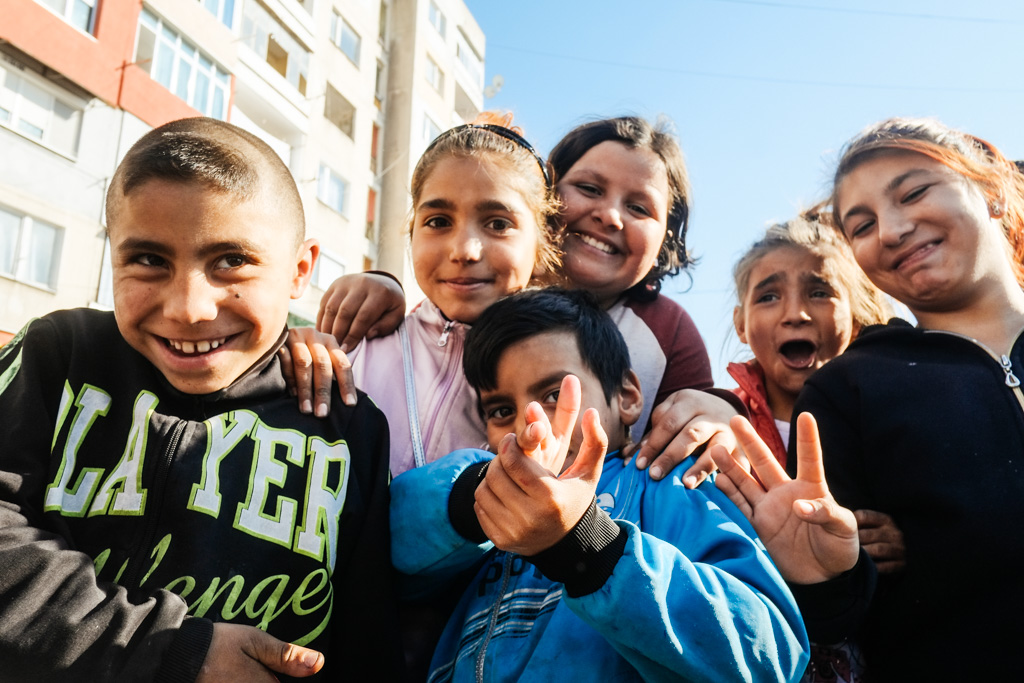
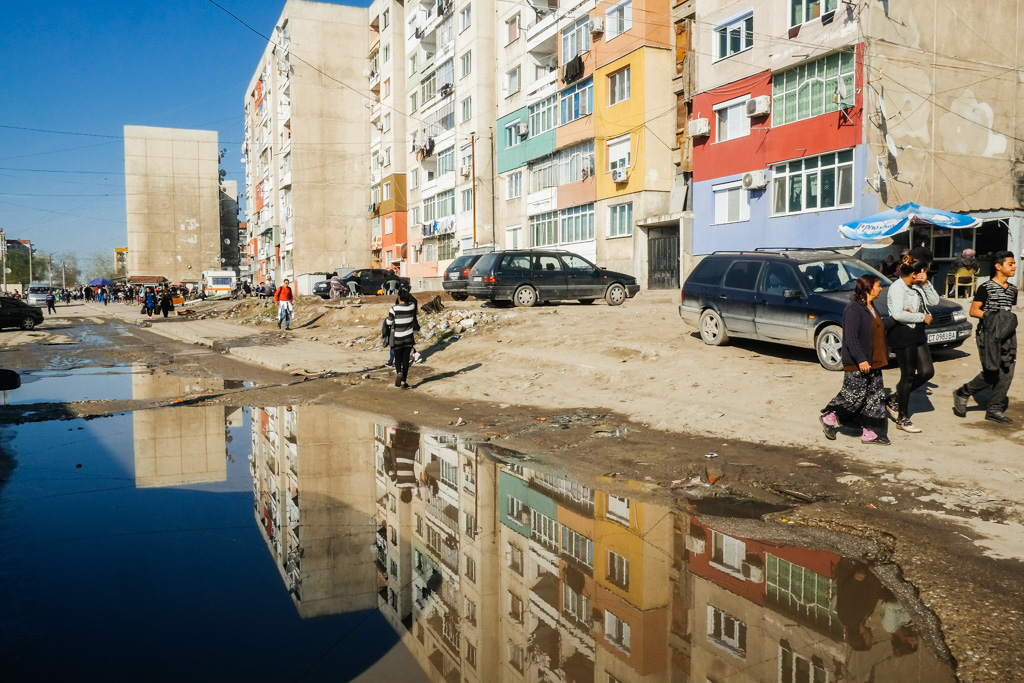
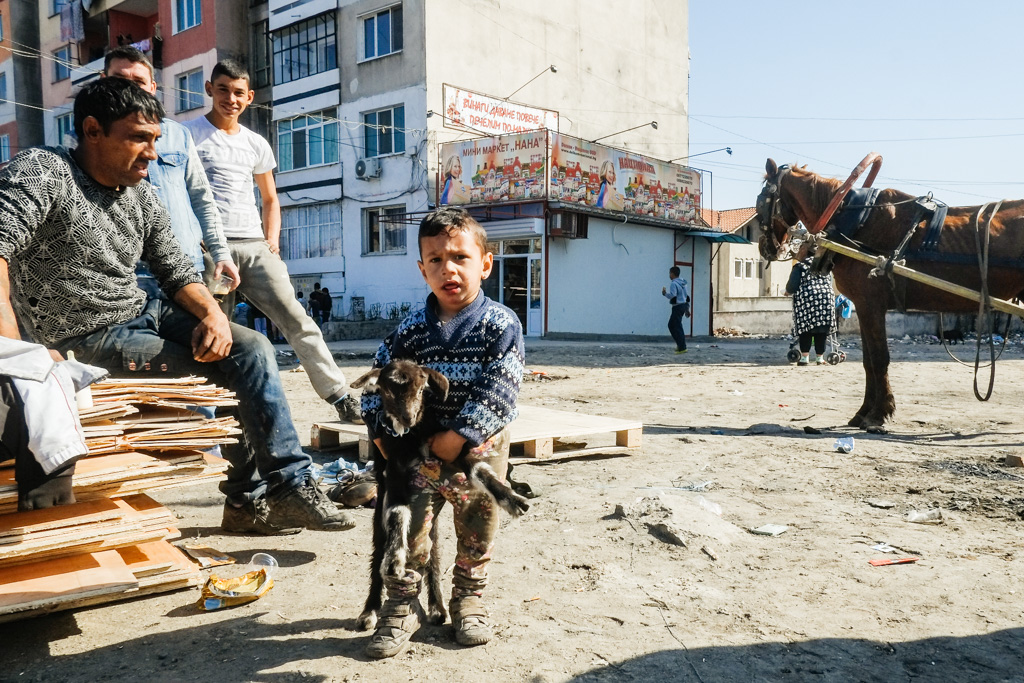
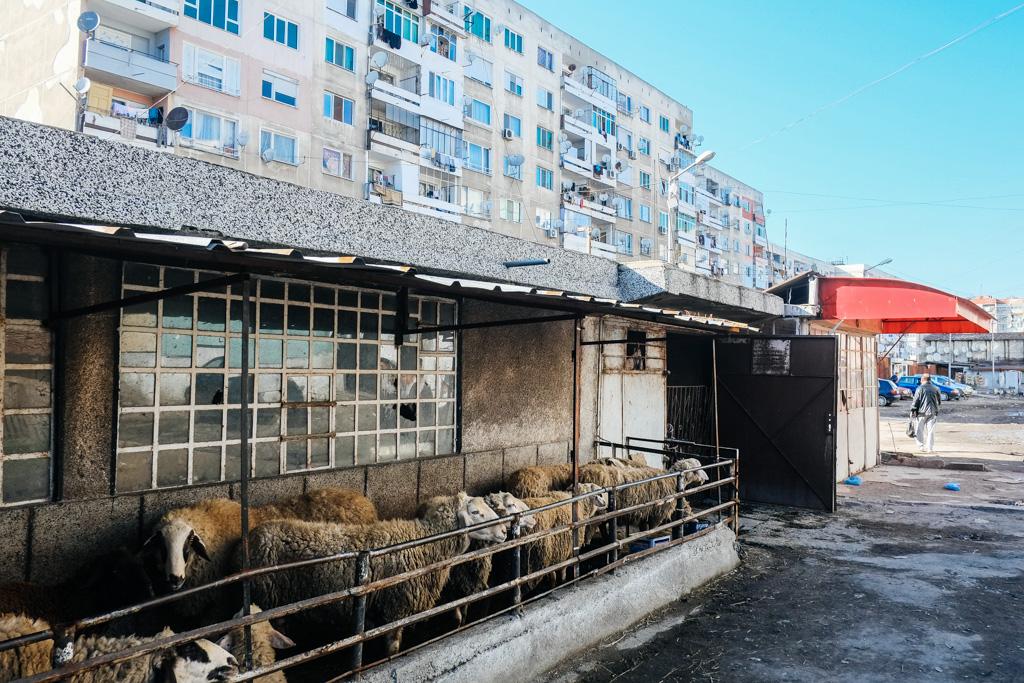
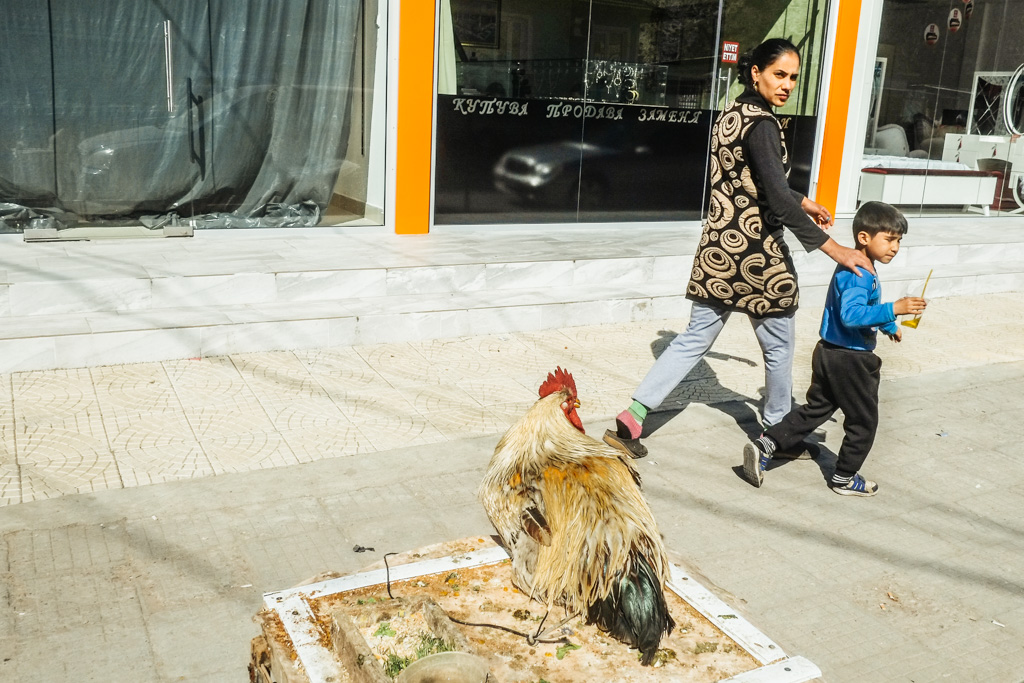
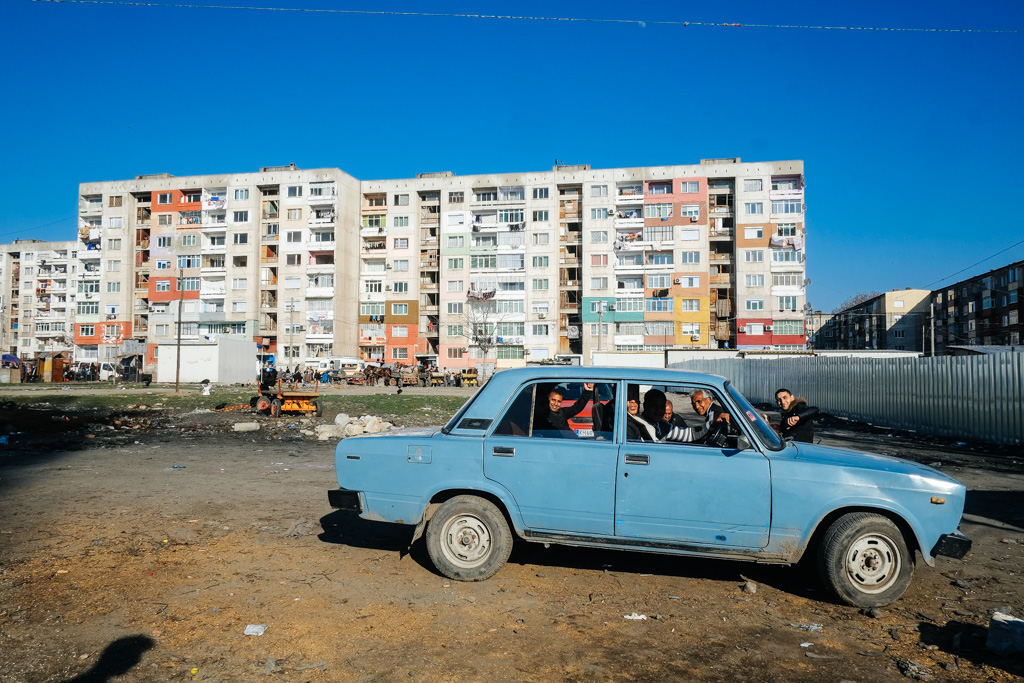
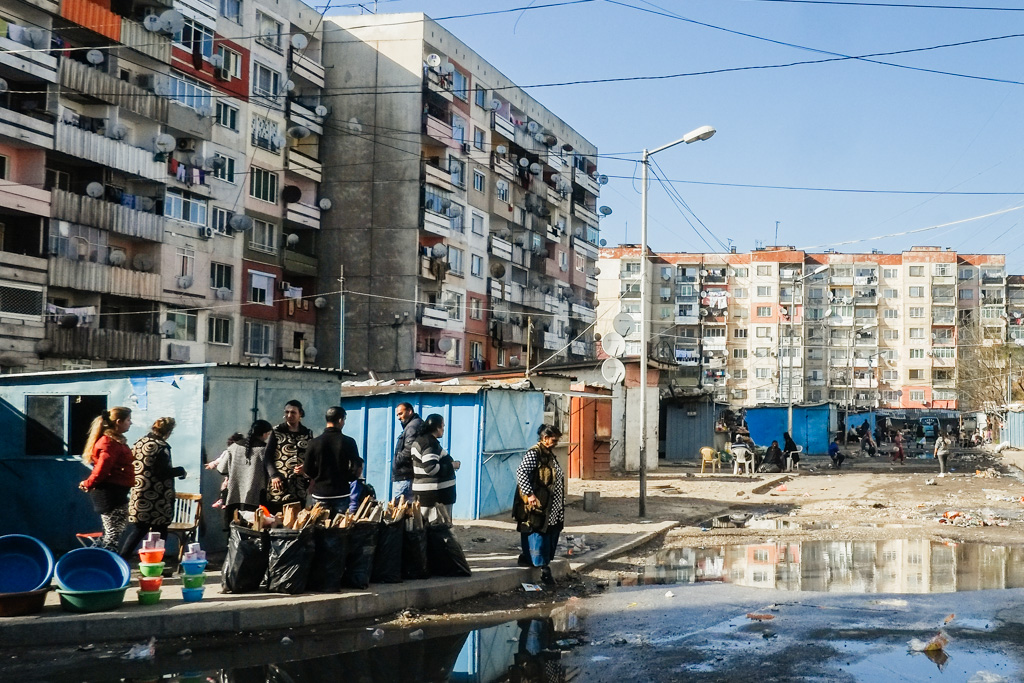
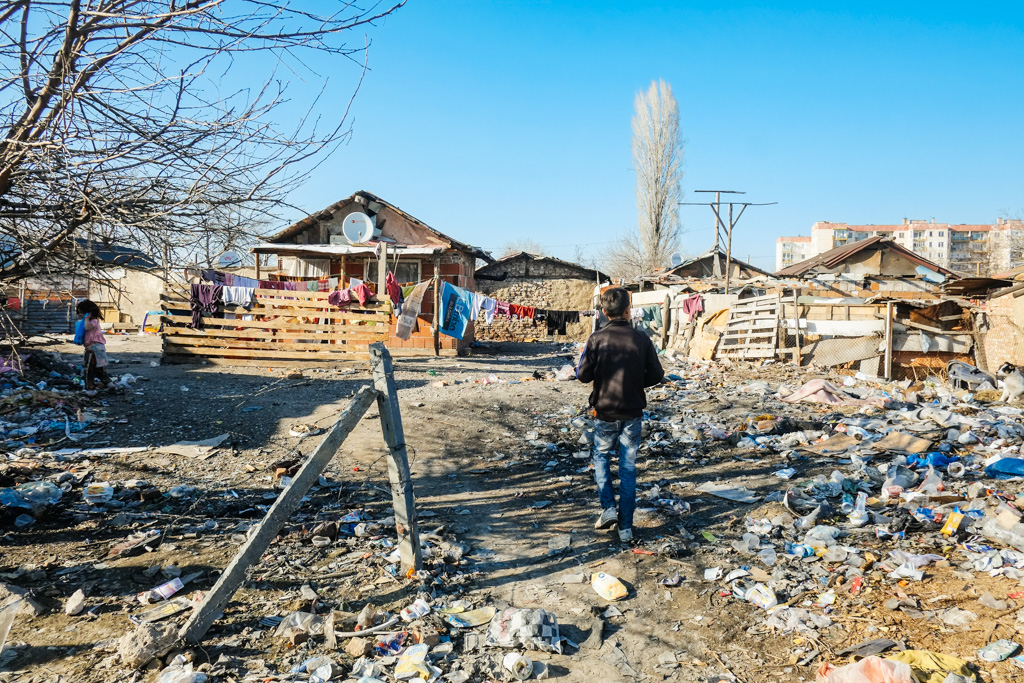
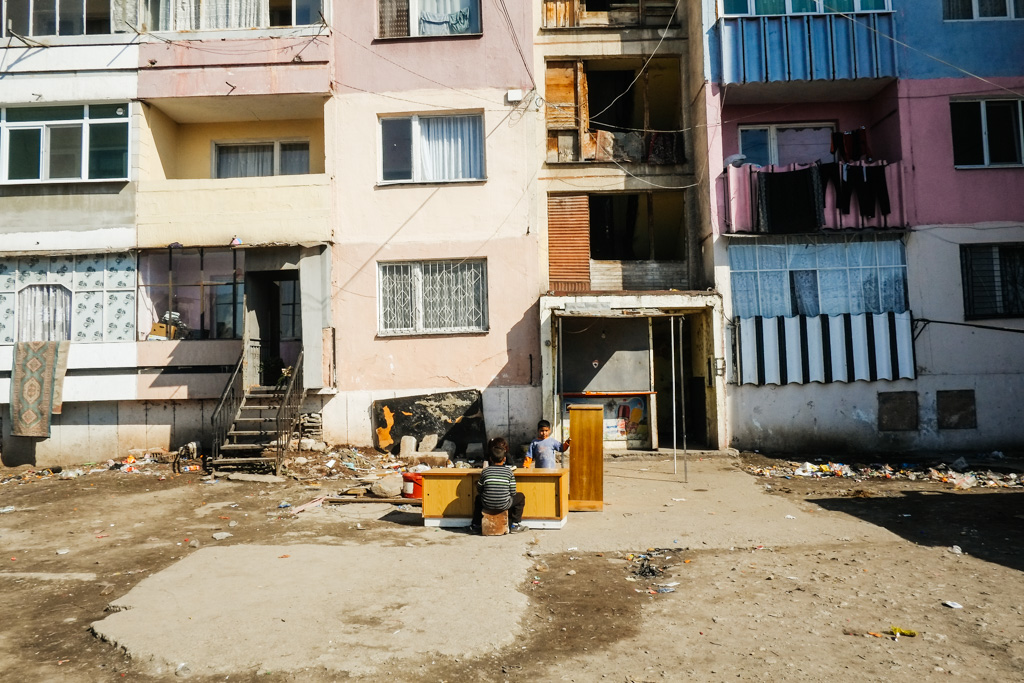
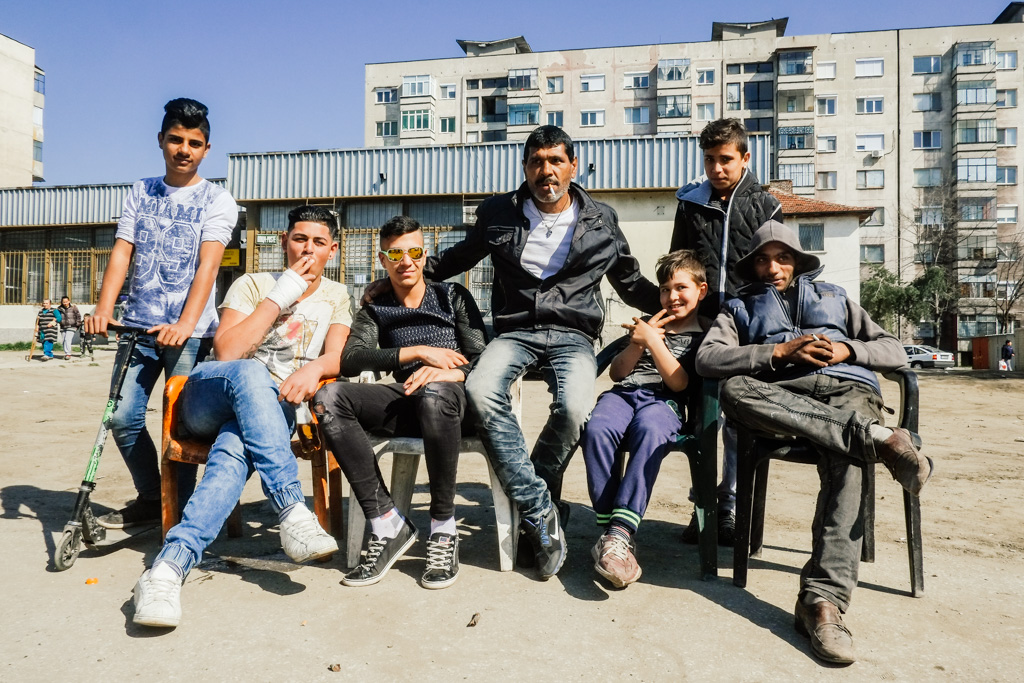
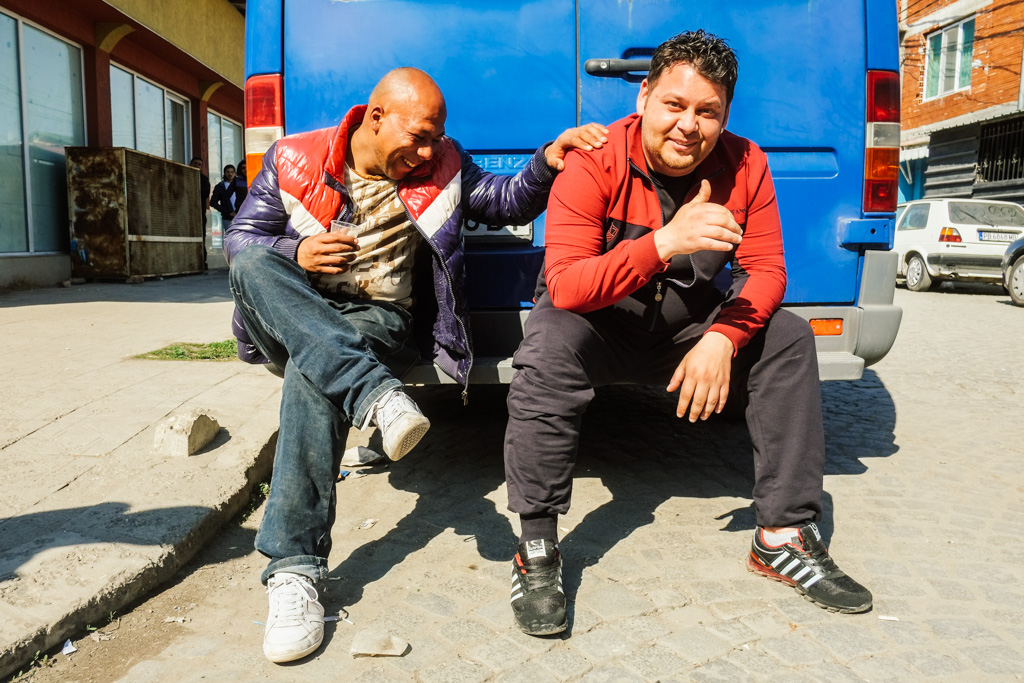
click to see an interactive map showing the location of this article
The thing is, for the most part, travel writing is based upon deception. Corporate writers are dependent upon their publisher satiating the requirements and bias of their masters, and not upsetting the bill-paying advertisers. Only the most positive and flowery destination reviews will make it through to print. Many travel bloggers, despite having built a truly independent outlet to express their own honesty and creativity, forsake that opportunity and instead accept the comparative crumbs of “sponsorship”, exchanging their little slice of the internet for free travel and accommodation, publishing questionable articles more curious for their omissions than their inclusions.
And, personally, honestly, I’m actually deceiving you right here on this page. It can’t be helped. No set of photos, nor a thousand or so words, gathered over the course of a single day in Stolipinovo, could possibly begin to tell the whole story. Readers will draw their own conclusions. Some will imagine this ghetto as worse than it really is, others, better. However, the point being that I promise not to be offended no matter what you take-away from this page. I’m being as unbiased as possible, there is no hidden “angle”, but I’ll accept that this is yet another form of deception.
Reams of words have been written about the Roma. The abject poverty, the discrimination, the pity, the racism, the hatred – it’s a problem that could either be taken as extremely complicated to solve, or, very straightforward. If I were to offer my own opinion, it’s simple – it’s not right for humans to live in these conditions, anywhere.
Despite the camera-incident-jerk, the people here in Stolipinovo are exceedingly friendly. I really didn’t feel in danger at any time. Many people said hello, had a chat, and shook my hand. A local café refused payment for my coffees, despite my insistence. A few kids provided a small tour of the back-streets. Those that were suspicious about us, no doubt in part due to misguided media and there desire to prevent another “foreigner” from further flaming the negativity surrounding the Roma people in Bulgaria, were gentle in their manner of questioning what exactly was I doing in their neighbourhood.
However, it was mostly smiles, laughter, and happy people. Indeed, the locals were actually dancing in the streets, to the sounds of multiple sound systems blasting music around the ‘hood. Invitations into homes and yards were being extended, food and drinks were constantly being offered.
That never happens when I stroll through a wealthy neighbourhood.
Nate.
PS, this will be the last post before I lead my latest tour through Iran, commencing in just a few days from now.

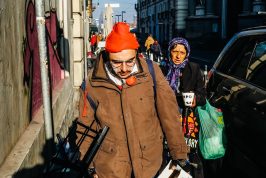
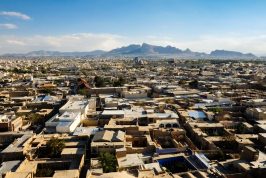

Awesome post. I haven’t traveled Europe too extensively, but this shows a totally different side to it than the stereotypical cobblestone streets and outdoor cafes. I feel from these images that there’s so much more to this place than readers can comprehended. Nice photojournalism work and interesting story.
Hi Stephanie – I think maybe it’s too much for me to comprehend as well! Just down the street from Stolipinovo, there are plenty of very typically European cobblestoned streets and cafe’s, the only Europe that most people – including most locals – get to see.
Awesome post! Would have have been better if you’d posted a pic of the window falling or action pic of jerk fight… Ken
haha… I had my hands full trying to keep hold of my camera, let alone taking a photo! (but I do agree, a photo would have been great ;)
These photos are absolutely incredible. I especially love the one where you can see the dog’s teeth in the background (how is it that I always notice dogs before people?)
I think it is very important for Europeans to see these photos because I am told time and time again by Europeans that the continent is the most civilized on the planet and has no poverty or challenges. In an attempt to get them out of their bubble, I try to explain things I’ve seen on the road from clean water filling stations in the middle of Chisinau to the poverty I’ve seen in the Balkans, etc. They often scoff and say that those parts of Europe do not count; only western Europe counts. And rather than travel east or to some places that really need tourism to help change things a bit, they will stick around their own parts and spew out ignorant comments that generated the conversation had in the first place. Thanks for taking the time to put an article like this online. I hope it opens some eyes. And in all truthfulness, these ignorant people can learn a lot about humility and community from places like this.
haha.. I purposefully chose the lead photo thinking “people notice dogs in photos”.. you’re not the only one ;)
And yes, I agree, people need to see this level of poverty, if for nothing else than just to know it really exists. I generally try to avoid Western Europe these days – along with most of the Western world, people their are (in general) just trying to convince themselves that the little bubble they exist in is all that matters. If only more would venture out of their bubble, I think the world would be a much better place.
One day, all of these bad things in the world are going to effect everyone’s little bubble, no matter where they live.
Wow!!!
I loved this piece Nate, honestly with my whole heart.
I have no idea what kind of skill you have to capture moments like these but my god are you blessed.
All the best, AK
Thanks Adriana, I’m so glad you enjoyed it.
Glad to see you writing this kind of article. When we were in Plovdiv last year we saw the panelaky from the ruin on the hill, but had no idea how it was in there. I don’t know what the answer is Nate, but these people will someday find human dignity on their own. I just doubt I will live to see it.
Cheers Mike. I’m also not sure of all the answers, but I know we have to stay optimistic – or else we’re already doomed. Also, not all of the panel-styled apartments are like this, just one particular area of Plovdiv.
Great piece, Nate!
I personally live in Plovdiv, but I have never been there. Wish it was a better place for these people, but sometimes I doubt they wish the same.. If you know what I mean..
Anyways, liked it a lot,
Respect!
Thanks Zaro… I don’t think many people from Plovdiv have been there. As for whether the wishes of the people that live in Stolipinovo, there’s only one way to find out – and that’s to visit and talk to them yourself. The people that I spoke to, certainly were aware of the terrible conditions of the neighbourhood.
Goodness yes what to do about the situation of the gypsies / roma is just as vexed as what to do with / about remote aboriginal communities in australia – though fewer people here claim the communities don’t want to be helped. A quick google brought up many articles about the situation, but few solutions; well none actually. But one thing is certain, centuries of being regarded as ‘other’ and somehow dangerous by one group and a feeling that a way of life and community must not be lost by the other creates a gap that’s pretty hard to bridge.
Hey Rohan, yes, you’re right – it’s a hard gap to bridge, the attitudes are similar In both countries. I was thinking about comparisons between the aboriginal communities – there is one very big difference – this is in the heart of the second largest city in Bulgaria, not “out of sight” in the outback.
Parallel universe. Thanks for the glimpse. I have two questions, though. Did these people contribute to the appalling state of their neighbourhood? And if they are “aware of the terrible conditions”, are they doing anything to improve them?
Milena, you’re welcome for the glimpse.
I will answer your loaded questions: yes, of course they are aware they’re living in terrible conditions. There is rubbish everywhere, and filth, as you can see. These people are aware of how the rest of society lives – and they’re aware of how shit their own neighbourhood is. Many people wondered why I was taking pictures of such a terrible place.
And clearly, they have contributed to the rubbish – but your question is not so important.
Because: as for “improving” the neighbourhood – one large problem is the trash/rubbish. It’s perhaps the number one problem. Now, in other neighbourhoods of Bulgaria, there are bins provided by the authorities, and bins are collected by the authorities. I’m sure you have them on your street. Here, I’m not sure I saw any bins provided at all. So what are they to do? And keep in mind, whatever your answer, it should also apply to everyone in Bulgaria – you are all citizens of the same country, and should all have equal services provided.
I did see people sweeping/cleaning some streets, but as you can see, on other streets, the situation has got to the point where if you were living there, it would seem to be beyond control. There were many streets that were looking quite reasonable – clearly the neighbours care about the environment. However, in some parts, it must just seem an insurmountable never-ending challenge – if I lived in those parts, honestly, my thought would not be to clean the neighbourhood, but to leave as fast as I could. And I’m sure most people reading this would think the same way if they lived there.
These are regular people, and the sooner they are treated with the same respect that other people are treated with, the better – for everyone in Bulgaria.
Apologies if you have taken any offense to my comment – it’s not my intention. I just find that most people I talk to don’t seem to think that Gypsies/Roma are entitled to the same rights and services as other Bulgarians, and it does make me a little upset. This is not just a Bulgarian thing either – unfortunately, many societies around the world have their own “gypsies”.
Nice photos, Nate! In my opinion – you managed to perfectly photo the actual situation, but you didn’t quite manage to identify the reasons. It’s the people that build up a neighbourhood, not the neighbourhood making people…
Hi 3D, thanks for the compliments on the photos. I tried to portray Stolipinovo as it actually is. As for the “reasons”, I made a conscious decision to not write an article about the reasons. I didn’t want to particularly discuss the politics either. It’s a very deep subject, much deeper than I could write in a single article. And, as much has already been written my more experienced people than myself, I didn’t feel I could substantially add to what is already out there.
I disagree with your statement “It’s the people that build up a neighbourhood, not the neighbourhood making people”. People are a product of their neighbourhood. We are strongly influenced by our surroundings. In a large way, the neighbourhood does indeed “make” the people.
But the bigger issue is, your statement ignores the full story – it’s also the people that surround a neighbourhood that have a very large effect.
Neighbourhoods do not exist in isolation – they are a product of the surrounding neighbourhoods, the community at large, and the decision makers of the country they exist within.
In this case, Stolipinovo is a product of Bulgaria.
Take a good look, and see what has been created by your country.
Perhaps, the people of Bulgaria could help the Bulgarians that live in Stolipinovo, solve a few problems.
It would probably be best for all of you.